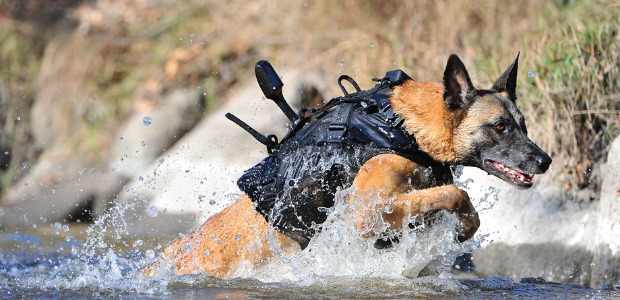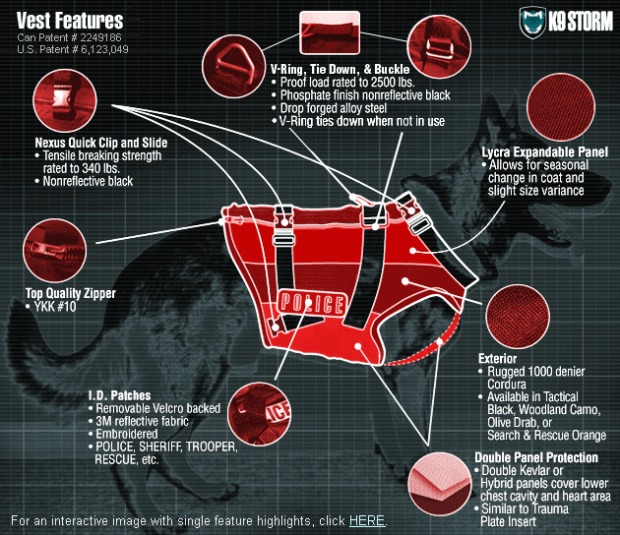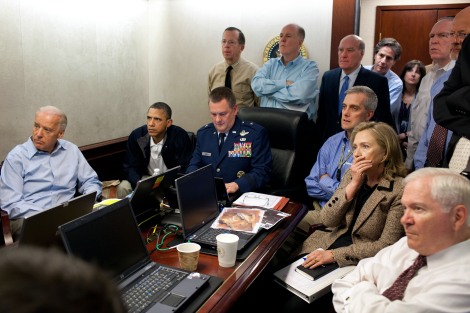 MSNBC.com
MSNBC.com
Swift rescue operation left three of the Somali captors dead
MOMBASA, Kenya - U.S. Navy snipers opened fire and killed three pirates holding an American captain at gunpoint, delivering the skipper unharmed and ending a five-day high-seas hostage drama on Easter Sunday.
The pirates were pointing AK-47s at Capt. Richard Phillips and he was in "imminent danger" of being killed when the commander of the nearby USS Bainbridge made the split-second decision to order his men to shoot, Vice Adm. Bill Gortney said.
Phillips' crew, who said they had escaped the pirates after he offered himself as a hostage, erupted in cheers aboard their ship docked in Mombasa, Kenya. Some waved an American flag and fired flares in celebration. A lawn sign in the captain's hometown of Underhill, Vermont that read "Pray for Captain Phillips' release and safe return home" was changed to read, "Capt. Phillips rescued and safe."
Resting comfortably
The U.S. Navy's 5th Fleet said Phillips, 53, was resting comfortably after a medical exam on the San Diego-based USS Boxer in the Indian Ocean off the coast of Somalia. Gortney said the captain had been "tied up inside the lifeboat" over much of the ordeal.
"I'm just the byline. The real heroes are the Navy, the Seals, those who have brought me home," Phillips said by phone to Maersk Line Limited President and CEO John Reinhart, the company head told reporters. A photo released by the Navy showed Phillips unharmed and shaking hands with the commanding officer of the USS Bainbridge.
U.S. officials said a fourth pirate had surrendered and was in military custody. FBI spokesman John Miller said that would change as the situation became "more of a criminal issue."
The rescue was a dramatic blow to the pirates who have preyed on international shipping and hold more than a dozen ships with about 230 sailors from a variety of nations. But it also risked provoking retaliatory attacks.
"This could escalate violence in this part of the world, no question about it," said Gortney, the commander of U.S. Naval Forces Central Command.
Jamac Habeb, a 30-year-old self-proclaimed pirate, told The Associated Press from one of Somalia's piracy hubs, Eyl, that, "our friends should have done more to kill the captain before they were killed. This will be a good lesson for us."
"From now on, if we capture foreign ships and their respective countries try to attack us, we will kill them (the hostages)," he said. France and India have both taken deadly military action against pirates in recent months and seen no significant retaliation, however.
'A model for all Americans'
The Defense Department twice asked President Barack Obama for permission to use military force to rescue Phillips, most recently late Friday evening, U.S. officials said. On Saturday morning, Obama signed off on the Pentagon's request, as he had a day earlier, said the officials, who spoke on the condition of anonymity to discuss internal deliberations.
"I share the country's admiration for the bravery of Capt. Phillips and his selfless concern for his crew," Obama said in his first comments on the situation. "His courage is a model for all Americans."
He added that the United States needs help from other countries to deal with the threat of piracy and to hold pirates accountable.
A spokeswoman for the Phillips family, Alison McColl, said Phillips and his wife, Andrea, spoke by phone shortly after he was freed.
"I think you can all imagine their joy and what a happy moment that was for them," McColl said outside of the Phillips home in Underhill. "They're all just so happy and relieved. Andrea wanted me to tell the nation that all of your prayers and good wishes have paid off because Capt. Phillips is safe."
The Navy said Phillips was freed at 7:19 p.m. local time.
When Phillips' crew heard the news aboard their ship in the port of Mombasa, they placed an American flag over the rail of the top of the Maersk Alabama and whistled and pumped their fists in the air. Crew fired two bright red flares into the sky from the ship.
"We made it!" said crewman ATM Reza, pumping his fist in the air.
"He managed to be in a 120-degree oven for days, it's amazing," said another of about a dozen crew members who came out to talk to reporters. He said the crew found out the captain was released because one of the sailors had been talking to his wife on the phone.
Surrendered himself to safeguard crew
Crew members said their ordeal had begun Wednesday with the Somali pirates hauling themselves up from a small boat bobbing on the surface of the Indian Ocean far below.
As the pirates shot in the air, Phillips told his crew to lock themselves in a cabin and surrendered himself to safeguard his men, crew members said.
Phillips was then held hostage in an enclosed lifeboat that was closely watched by U.S. warships and a helicopter in an increasingly tense standoff.
Capt. Joseph Murphy, the father of second-in-command Shane Murphy, thanked Phillips for his bravery.
"Our prayers have been answered on this Easter Sunday," Murphy said. "If not for his incredible personal sacrifice, this kidnapping and act of terror could have turned out much worse."
Murphy said both his family and Phillips' "can now celebrate a joyous Easter together."
Talks to free Phillips began Thursday with the captain of the Bainbridge talking to the pirates under instruction from FBI hostage negotiators on board the U.S. destroyer. The pirates had threatened to kill Phillips if attacked.
Escape attempt thrwarted
Phillips jumped out of the lifeboat Friday and tried to swim for his freedom but was recaptured when a pirate fired an automatic weapon at or near him, according to U.S. Defense Department officials speaking on condition of anonymity because they are not authorized to talk about the unfolding operations.
Elsewhere off the Somali coast Friday, the French navy freed a sailboat seized off Somalia by other pirates, but one of the five hostages was killed.
Three U.S. warships were within easy reach of the lifeboat and early Saturday, the pirates holding Phillips in the lifeboat fired a few shots at a small U.S. Navy vessel that had approached, a U.S. military official said on condition of anonymity because he was not authorized to discuss the matter publicly.
The official said the U.S. sailors did not return fire, the Navy vessel turned away and no one was hurt. He said the vessel had not been attempting a rescue.
The district commissioner of the central Mudug region said talks on freeing Phillips had gone on all day Saturday, with clan elders from his area talking by satellite telephone and through a translator with Americans, but collapsed Saturday night.
Phillips' crew of 19 American sailors reached safe harbor in Kenya's northeast port of Mombasa about the same time under guard of U.S. Navy Seals.
'Good lesson for the pirates'
The U.S. Navy had assumed the pirates would try to get their hostage to shore, where they could have hidden him on Somalia's lawless soil and been in a stronger position to negotiate a ransom.
"The Somali government wanted the drama to end in a peaceful way, but any one who is involved in this latest case had the choice to use violence or other means," Abdulkhadir Walayo, the prime minister's spokesman, told the AP. "Any way, we see it will be a good lesson for the pirates or any one else involved in this dirty business."
Residents of Harardhere, another port and pirate stronghold, were gathering in the streets after news of the captain's release, saying they fear pirates may now retaliate against some of the 200 hostages they still hold.
"We fear more that any revenge taken by the pirates against foreign nationals could bring more attacks from the foreign navies, perhaps on our villages," Abdullahi Haji Jama, who owns a clothes store in Harardhere, told the AP by telephone.
Pirates are holding about a dozen ships with more than 200 crew members, according to the Malaysia-based piracy watchdog International Maritime Bureau. Hostages are from Bulgaria, China, Germany, Indonesia, Italy, the Philippines, Russia, Taiwan, Tuvalu and Ukraine, among other countries.
A spokesman for the German anti-piracy operation told the AP that the U.S. did not give any clue as to its plans in regard to the ship captain.
He had no details on the fate of the German freighter Hansa Stavanger, which was captured earlier this month or on the fate of its 24 crew of five Germans, three Russians, two Ukrainians, two Filipinos and 12 Tuvalu residents.
Copyright 2009 The Associated Press.
 To build Blackfish, engineers sawed off the top half of an existing jet ski and added sensor packages for underwater sonar, surface radar and a video camera.
To build Blackfish, engineers sawed off the top half of an existing jet ski and added sensor packages for underwater sonar, surface radar and a video camera. 

 Christian at
Christian at 






